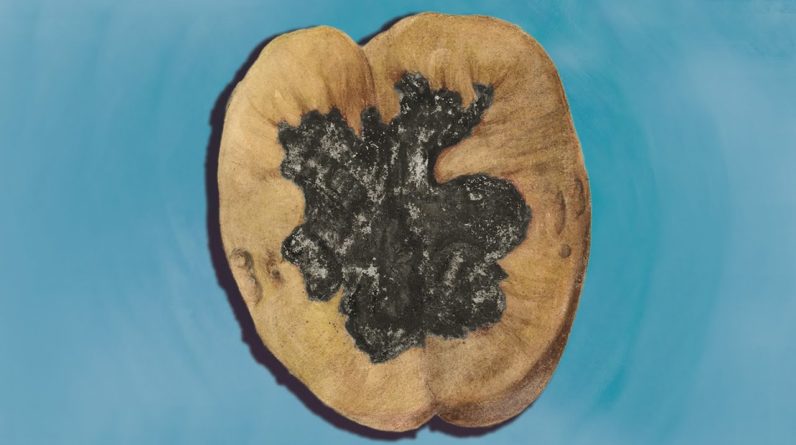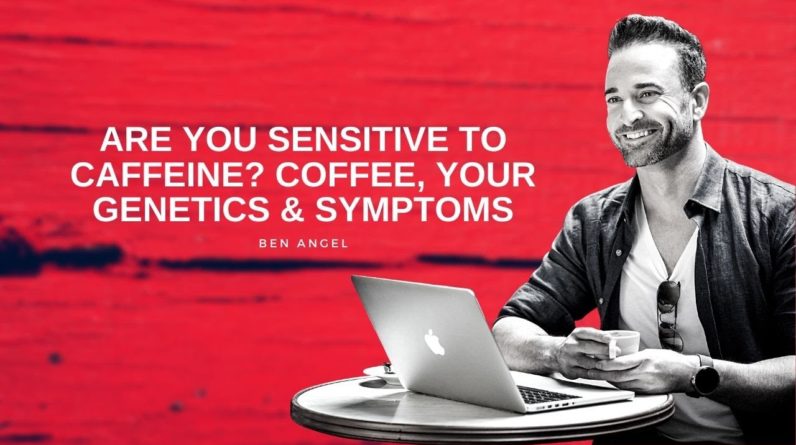
I recently reported a 21 year old man, BB,
who drank 2 gallons of coffee in 3 hours. The amount of caffeine in this, roughly is
7 grams. The maximum amount in healthy adults cited
by the US Food and Drug Administration is 0.4 grams per day. So BB consumed more than 16 times the highest
recommended daily dose. That's gonna cause problems. Caffeine is used by more than 90% of adults
in the United States. In 2013, it was reported that average consumption
was over 200 milligrams per day, which is about 2 cups of coffee, or 5 cans of soft
drink. Because it’s so widely available and widely
used, misuse commonly happens, both intentionally and unintentionally. Caffeine is a stimulant, meaning it promotes
activity in the body. Because it’s naturally occurring, it has
structure similar to chemicals you find in the body. Caffeine is a methyl xanthine. Xanthine is a purine base. What’s a purine? Well, it’s a base for Adenine and Guanine,
which are the A and G you see in DNA sequences. If you extend Adenine, you can get Adenosine,
which is the A in ATP.
ATP is the chemical that’s a primary energy
source in cells, produced by the mitochondria. So these chemicals are all familiar in the
naturally occurring world, and derivatives are all found in the human body. But how exactly does caffeine function? What does it do? At normal doses, like 1-2 cups of coffee,
caffeine does what every stimulant does. It increases wakefulness and alertness. It does this by blocking 2 things in the brain. First is something called gamma aminobutyric
acid, or GABA. This is the major inhibitory neurotransmitter
in the brain, as it blocks brain signals and decreases activity of the nervous system by
impeding impulses between nerve cells. Biologically, you don’t want uninhibited
signal transmission happening in the brain. You need some level of control, so GABA acts
as a check. So if GABA is blocked by caffeine, then you
decrease the inhibitory tone of the brain, causing an increase in stimulation.
The second thing caffeine appears to block
is adenosine. Interesting, caffeine’s chemical structure
is similar to adenosine, so it happens to bind to those receptors too. Adenosine in the brain, is an inhibitory neurotransmitter,
so blocking inhibition, can lead to stimulation. So patient BB needed to stay awake to cram
for his final. I was a student before, I couldn’t pull
all nighters if I tried, and I don’t recommend them And I couldn't do them now even I wanted to. But BB’s strategy was to drink coffee to
keep himself awake because he thought, more study time, meant better chances of scoring
higher on the exam. So after 1 pot of coffee, he had another,
and another, and another, until it came out to be 2 gallons of coffee, in less than 3
hours.
In the case of caffeine, large amounts will
lead to sympathomimetic toxidrome. That is a toxic syndrome, that mimics the
activity of the sympathetic nervous system. Remember that sympathetic nervous system is
the fight or flight mechanism, and that the parasympathetic nervous system is the rest
and digest mechanism. Sympathomimetic toxidrome is characterized
by an overabundance of stimulatory neurotransmitters. In the case of caffeine, we’re looking at
a catecholamine crisis. So in large doses, we're going to have psychotropic responses including
anxiety, delusion, diaphoresis which is excessive sweating, hyperreflexia, and mydriasis or
pupil dilation, all of these were happening in patient BB before he presented to the emergency
room. Because an excess of caffeine would block
most inhibitory processes in the brain, high amounts led to the patient's seizure. But caffeinism, isn’t just limited to central
nervous system manifestations. Caffeine is known to induce direct catecholamine
release. In several animal models, it appears that
epinephrine, or adrenaline release is mediated by calcium release in the adrenal gland.
Epinephrine is a hormone, norepinephrine is
a neurotransmitter. Epinephrine is a non selective adrenergic
agonist, so it hits alpha and beta subtypes without issue. What happens when alpha adrenergic receptors
are agonized? You get an inhibition of insulin secretion
by the pancreas. You get stimulation of glycogenolysis in the
liver and muscle, that is a breaking down of sugar stores in those tissues. Alpha adrenergic stimulation also causes glycolysis
in the muscle. These make sense because epinephrine is released
in fight or flight situations, and you want as much glucose available in the blood so
that muscle tissue can use it. Now how about Beta adrenergic stimulation? You get increased glucagon secretion by the
pancreas, which is a hormone opposite of insulin. If insulin shifts materials IN to cells, glucagon
does the opposite. Beta stimulation also increases lipolysis
in adipose tissue. So overall, adrenergic stimulation increases
availability of glucose and fatty acids in the blood, which supports the fight or flight
model of the sympathetic nervous system. But caffeine isn’t finished here. In large doses, we find also that caffeine
inhibits phosphodiesterase, which breaks down cyclic Adenosine monophosphate.
Cyclic AMP is a second messenger used in the
amplification of adrenaline. If the enzyme that breaks down cyclic AMP
is inhibited, then it means the amplification of adrenaline intensifies, feeding the cycle
forward. It doesn’t help that the major metabolites
of caffeine are still biologically active as well. So what does this actually do to other parts
of the body? After the central nervous system, think of
caffeine as affecting all kinds of muscle tissue in the body. We already know skeletal muscle is affected
by tremors and seizures. Smooth muscle of the GI tract will be affected
as shown by vomiting, abdominal cramping, and hyperactive bowel sounds. And cardiac muscle will be affected by widened
pulse pressure, sinus tachycardia, dysrhythmias, and hypotension. So Patient BB presented to the emergency room
in the middle of the night. He just had a series of seizures. His mother had no idea what happened to him. He can’t speak coherently after his seizures
so doctors don’t immediately know what happened either. In a previously healthy 20 year old college
student, unconscious and post-ictal state could be a lot of things. No smell of alcohol or any kinds of smoke,
so that’s out.
Pupils were dilated. Tachycardia. Hyperthermia. Tachypnea. So there’s the signs of a stimulant presence. Patient BB also has several ventricular tachycardia
arrests happen. He was only stabilized after administration
of lidocaine and sodium bicarbonate. The patient also had high creatine kinase
levels and profound hypokalemia, the latter being characteristic in caffeine toxicity
likely due to excess catecholamine release as epinephrine can cause an intracellular
shift, and the former indicating rhabdomyolysis, which brings us back to the muscles. Hypokalemia can cause rhabdomyolysis. Sodium enters the cell to initiate a muscle
contraction.

Calcium enters to commit to a contraction. Potassium is pumped out of the cell to maintain
polarity temporarily. Excess potassium extracellularly can promote
muscle relaxation, so low potassium levels would promote contraction. So you can see, caffeine toxicity is caused
by 1) inhibition of inhibitory neurotransmitters GABA and adenosine 2) direct catecholamine
release and 3) phosphodiesterase inhibition amplifying the effect of catecholamines. Both the CNS and catecholamines directly affect
muscle tissue, which at the most severe cases will affect the heart, and can affect the
skeletal muscles, causing kidney damage. For the most part, treatment is supportive
care. Most fatalities from caffeine come from cardiac
dysrhythmias. If epinephrine agonizes adrenergic receptors,
then we could give beta blockers to block the effect on the beta subtypes. Some people have noted that there could be
hypothetically speaking, unopposed alpha stimulation if beta is blocked, which would lead to peripheral
vessels constricting and causing a hypertensive crisis, but that doesn’t seem like it happens
in practice. In some cases, pressers have to given to help
compensate for hypotension.
Caffeine toxicity causes hypotension because
beta agonism from epinephrine causes some vasodilation, and volume depletion from urinary
and excessive sweating happen in this toxidrome. Replenish potassium for hypokalemia. Give benzodiazepine for seizure, which modulates
the action of GABA, the inhibitory neurotransmitter. Rehydrate for rhabdomyolysis, and the metabolic
abnormalities often correct with this supportive care. Now, I want to bring up a paper that was published
in late spring 2020 in the CHEST Journal. In it, they described high dose insulin euglycemic
therapy for the treatment of caffeine toxicity. In it, there was a 33 year old woman who presented
to the emergency room after consuming pure caffeine powder. After she had a seizure, she had a series
of cardiac arrests that alternated between shockable rhythms and pulseless electrical
activity.
When she was resuscitated 90 minutes later,
it didn’t seem like she was OK. Her heart beat was almost unnoticeable. In a last ditch effort to treat her, the doctors
tried high dose insulin euglycemic therapy. They loaded her up with a 1 unit per kilogram
bodyweight insulin dose along with 20 g of glucose. Immediately, there was a sudden rise in her
blood pressure. She started moving her limbs. Her acidosis started correcting. Doctors moved her to the intensive care unit
where they started giving her half a unit of insulin per kilogram body weight per hour,
with more dextrose and potassium. And after 3 days, they were able to wean her
off therapy because she made a full neurologic recovery, and was discharged.
She couldn’t remember even having taken
the caffeine, a few days earlier. So, how could this patient who was maybe just
a few minutes away from expiration, able to come back and make a full recovery? Well, it’s very possible that she was going
to make a spontaneous recovery. Although, that might not be all that likely. There could be a mechanism for how this high
dose insulin euglycemic therapy works. Do you remember the alpha and beta adrenergic
stimulation? Where the effects of those were to suppress
insulin and encourage glycolysis and glycogenolysis, all with the intent of increasing blood glucose
and fatty acids? Well, it looks like insulin could force the
heart muscle to metabolize glucose instead of free fatty acids.
This is interesting to me that it was included
in the paper, because there has been use cases of intralipid emulsion being used to treat
caffeine toxicity too. Part of lipid emulsion therapy theory is that
if a medicine is lipophilic, that is it dissolves easily in fat, then infusing fat into the
blood can pull the medicine away from critical tissue, into the bulk flow of the lipid infusion. But some experiments of lipid emulsion therapy
have also shown that the increase in fatty acids in the blood have a positive inotropy
associated with it, which could be a secondary effect of how ILE can treat caffeine toxicity. But that would maybe contradict the hypothesis
that high-dose insulin forces the myocardium to use glucose instead of free fatty acids. I don’t think we really know 100% what’s
going on here. It’s possible that insulin has the potential
to cause a Le Chatlier principle- like effect. That is, if excess catecholamine release suppresses
insulin, that shifting the reaction the other way by giving lots of insulin could counteract
that effect. While the insulin isn’t directly counteracting
the caffeine as an antidote would, it looks like in this N of 1 case report, that it may
have had some effect on cardiac output, neurologic status and acid base imbalance that resulted
from the caffeine toxicity.
Glucose-insulin-potassium have had some effect
on other low cardiac output states, like septic shock and heart failure, but again these are
case reports, and may indicate there are other things happening in the physiology that we
may not be aware of today in 2020. Caffeine toxicity isn’t fun. The chemical is natural. With anything that’s a chemical, be careful. With anything that’s natural be careful. The toxicity is caused by antagonizing inhibitory
neurotransmitters, direct catecholamine release, and PDE inhibition, things that happen in
large doses, but not necessarily at regular therapeutic doses that are under the daily
recommended maximum amount.
We don’t directly test for caffeine levels
in the blood because most hospitals don’t do that. Hypokalemia is a common feature in addition
to the sympathomimetic toxidrome that comes with this. Coingestion of other things can happen as
well. And with caffeine being so widely available
and used, it’s always something you should have in mind. Thanks for watching. Take care of yourself and be well..







